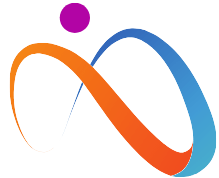In a move to address concerns about the potential misuse of its AI models, Google DeepMind has recently announced the formation of a new organization called AI Safety and Alignment. This new org aims to focus on ensuring the safety and ethical use of artificial intelligence. The decision comes as policymakers and the public express growing unease about the potential for AI tools to be used for disinformation and misleading purposes.
AI Safety and Alignment: A New Organization
The AI Safety and Alignment organization comprises existing teams working on AI safety within DeepMind, as well as new specialized cohorts of GenAI researchers and engineers. While Google has not disclosed the exact number of new hires resulting from this formation, it has revealed that the organization will include a team dedicated to safety around artificial general intelligence (AGI). AGI refers to hypothetical systems that can perform any task a human can.
The creation of the AI Safety and Alignment organization mirrors the mission of OpenAI’s Superalignment division, which was formed last year. Both organizations are focused on ensuring the safe development and deployment of advanced AI systems. However, one notable difference is that the new team within AI Safety and Alignment is based in the United States, near Google’s headquarters. This decision aligns with Google’s efforts to maintain its competitive edge in the AI field while projecting a responsible and measured approach.
The Role of AI Safety and Alignment
The primary goal of the AI Safety and Alignment organization is to develop and incorporate concrete safeguards into Google’s GenAI models, both current and in development. The organization’s overarching mission is to prevent the amplification of bias and other injustices, ensure child safety, and prevent the spread of false medical advice.
One of the key areas of focus for the organization is safety around AGI. This involves addressing the technical challenges of controlling potential superintelligent AI systems that are yet to be realized. The AI Safety and Alignment team will work alongside DeepMind’s existing AI-safety-centered research team in London, known as Scalable Alignment, to explore solutions to these challenges.
Leadership and Expertise
Leading the AI Safety and Alignment team is Anca Dragan, a former Waymo staff research scientist and a professor of computer science at UC Berkeley. Dragan brings a wealth of experience in AI safety systems and algorithms for human-AI and human-robot interaction. Her expertise will be instrumental in guiding the organization’s efforts to better understand human preferences and values and to ensure robustness against adversarial attacks.
Despite her involvement with UC Berkeley and other commitments, Dragan emphasizes that her research at DeepMind and UC Berkeley are interconnected and complementary. She believes that addressing present-day concerns and catastrophic risks are not mutually exclusive and that work contributing to the long term also improves the present day.
Addressing Concerns and Challenges
The skepticism surrounding AI tools, particularly in relation to deepfakes and misinformation, has reached new heights. According to a poll conducted by YouGov, 85% of Americans are concerned about the spread of misleading video and audio deepfakes. Additionally, a survey by The Associated Press-NORC Center for Public Affairs Research found that nearly 60% of adults believe AI tools will increase the volume of false and misleading information during the upcoming U.S. election cycle.
Enterprises are also cautious about the limitations and implications of AI technology. A recent survey by Intel subsidiary Cnvrg.io revealed that around a fourth of respondents had reservations about GenAI compliance and privacy, reliability, high implementation costs, and a lack of technical skills needed to fully utilize the tools.
To address these concerns, the AI Safety and Alignment organization aims to invest more resources in evaluating and improving the safety of GenAI models. They recognize the need to account for human cognitive biases in training data, establish good uncertainty estimates, implement inference-time monitoring, and engage in confirmation dialogues for consequential decisions. However, the challenge remains in being confident that the models will not misbehave in unforeseen ways.
Future Outlook
While the formation of the AI Safety and Alignment organization shows Google DeepMind’s commitment to addressing AI safety concerns, the road ahead is not without challenges. The organization will need to navigate the complex landscape of AI ethics, continually improve safety measures, and ensure transparency in their processes. The public, regulators, and customers will closely scrutinize the organization’s efforts to create helpful and safe AI models.
As technology continues to evolve, it is crucial for organizations like Google DeepMind to prioritize the responsible development and deployment of AI. The AI Safety and Alignment organization’s work will play a vital role in shaping the future of AI by addressing safety concerns and promoting ethical practices. By investing in AI safety, Google DeepMind and other companies can foster trust, protect against misuse, and ensure that AI benefits society as a whole.
Conclusion
Google DeepMind’s formation of the AI Safety and Alignment organization demonstrates its commitment to addressing concerns about AI safety and ethics. By focusing on developing concrete safeguards, preventing the amplification of bias, and ensuring child safety, the organization aims to promote the responsible use of AI. Led by Anca Dragan, the team will work alongside other AI safety-focused groups to address the technical challenges associated with AGI. The organization’s efforts will contribute to building a more trustworthy and secure AI ecosystem for the future.





